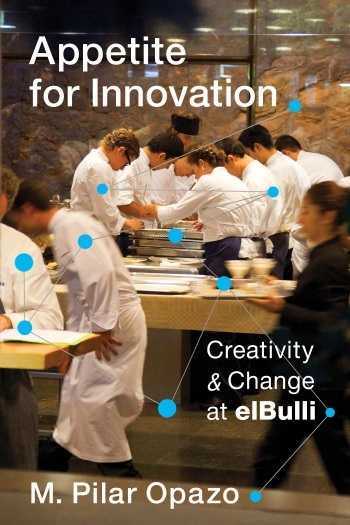Organizational Creativity and Radical Innovation
“The research for Appetite for Innovation was conducted when Adria’s organization was undergoing its most profound transformation, from a restaurant to a research center for innovation, “elBulli foundation”. The book, therefore, takes advantage of this unique moment in time to retrace the story of a restaurant that became a legend and to explore underlying factors that led to its reinvention in 2011 into a seemingly unparalleled organizational model.” — M. Pilar Opazo
This week, our featured book is Appetite for Innovation: Creativity and Change at elBulli, by M. Pilar Opazo. Today, we are happy to crosspost a short article by Opazo, originally posted at orgtheory.net, that contextualizes her book within the field of sociology.
Don’t forget to enter our book giveaway for a chance to win a free copy of Appetite for Innovation!
How is it possible for an organization to systematically enact changes in the larger system of which it is part? Using Ferran Adria’s iconic restaurant “elBulli” as an example of organizational creativity and radical innovation, Appetite for Innovation examines how Adria’s organization was able to systematically produce breakthroughs of knowledge within its field and, ultimately, to stabilize a new genre or paradigm in cuisine – the often called “experimental,” “molecular,” or “techno-emotional” culinary movement.
Recognized as the most influential restaurant in the world, elBulli has been at the forefront of the revolution that has inspired the gastronomic avant-garde worldwide. With a voracious appetite for innovation, year after year, Adrià and his team have broken through with new ingredients, combinations, culinary concepts and techniques that have transformed our way of understanding food and the development of creativity in haute cuisine.
Appetite for Innovation is an organizational study of the system of innovation behind Adrià’s successful organization. It reveals key mechanisms that explain the organization’s ability to continuously devise, implement and legitimate innovative ideas within its field and beyond. Based on exclusive access to meetings, observations, and interviews with renowned professionals of the contemporary gastronomic field, the book reveals how a culture for change was developed within the organization; how new communities were attracted to the organization’s work and helped to perpetuate its practice, and how the organization and its leader’s charisma and reputation were built and maintained over time. The book draws on examples from other fields, including art, science, music, theatre and literature to explore the research’s potential to inform practices of innovation and creativity in multiple kinds of organizations and industries.
The research for Appetite for Innovation was conducted when Adria’s organization was undergoing its most profound transformation, from a restaurant to a research center for innovation, “elBulli foundation”. The book, therefore, takes advantage of this unique moment in time to retrace the story of a restaurant that became a legend and to explore underlying factors that led to its reinvention in 2011 into a seemingly unparalleled organizational model.
Appetite for Innovation is primarily intended to reach and be used by academic and professionals from the fields of innovation and organizations studies. It is also directed towards a non-specialist readership interested in the topics of innovation and creativity in general. In order to engage a wider audience and show the fascinating world of chefs and the inner-workings of high-end restaurants, the book is filled with photographs of dishes, creative processes and team’s dynamics within haute cuisine kitchens and culinary labs. It also includes numerous diagrams and graphs that illustrate the practices enacted by the elBulli organization to sustain innovation, and the networks of relationships that it developed over time. Each chapter opens with an iconic recipe created by elBulli as a way of illustrating the book’s central arguments and key turning points that enable the organization to gain a strategic position within its field and become successful.
You can read the post in its entirety at orgtheory.net.



